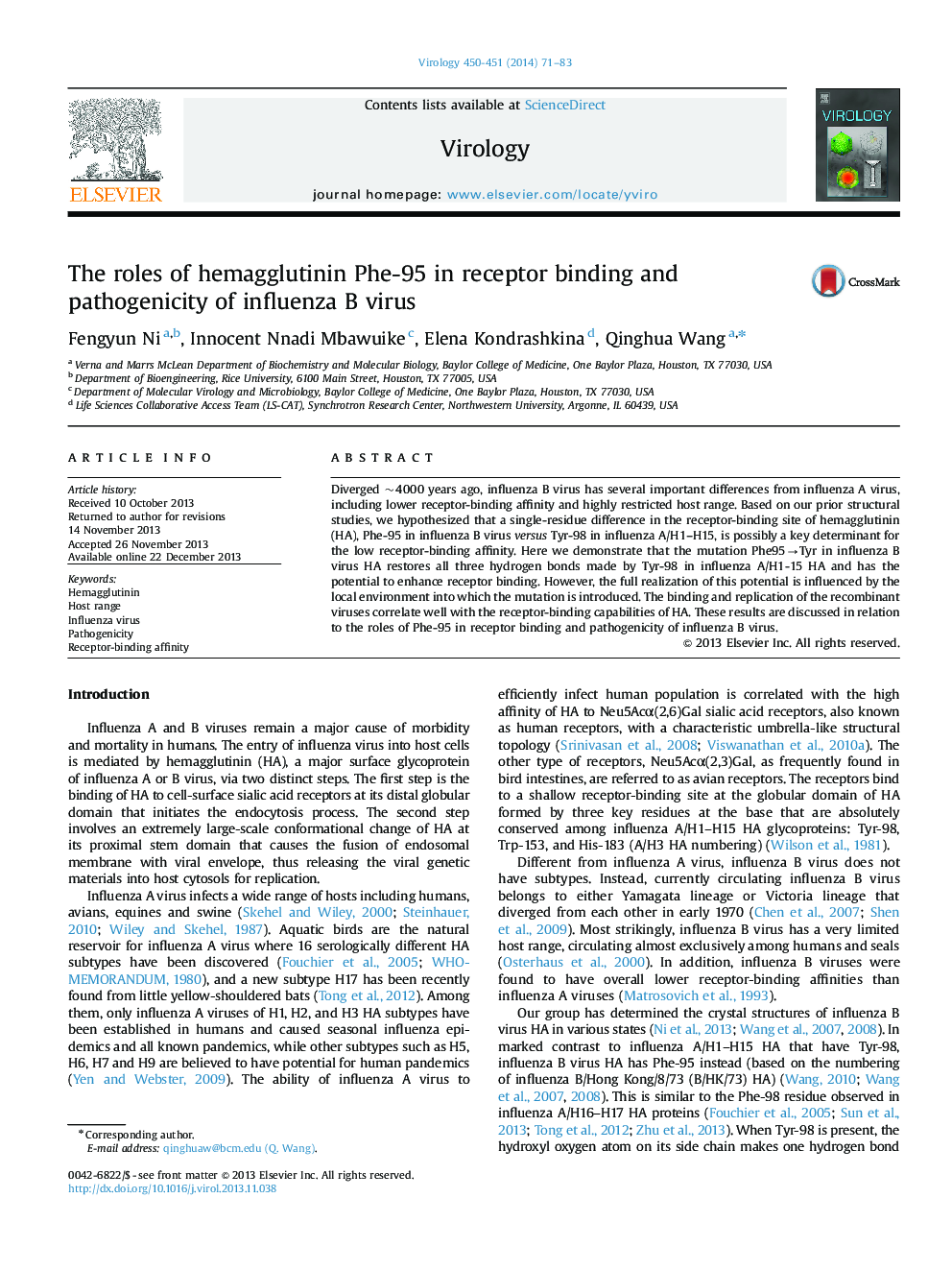| Article ID | Journal | Published Year | Pages | File Type |
|---|---|---|---|---|
| 6140312 | Virology | 2014 | 13 Pages |
â¢The mutation Phe95âTyr in influenza B virus HA restores all three hydrogen bonds made by Tyr-98 in influenza A/H1-15 HA.â¢The effects of Phe95âTyr in receptor binding depend on the local environment at and around the receptor-binding site.â¢Glycosylations play a key role in receptor binding.â¢The binding and replication of recombinant viruses correlate well with the receptor-binding capabilities of HA.
Diverged ~4000 years ago, influenza B virus has several important differences from influenza A virus, including lower receptor-binding affinity and highly restricted host range. Based on our prior structural studies, we hypothesized that a single-residue difference in the receptor-binding site of hemagglutinin (HA), Phe-95 in influenza B virus versus Tyr-98 in influenza A/H1-H15, is possibly a key determinant for the low receptor-binding affinity. Here we demonstrate that the mutation Phe95âTyr in influenza B virus HA restores all three hydrogen bonds made by Tyr-98 in influenza A/H1-15 HA and has the potential to enhance receptor binding. However, the full realization of this potential is influenced by the local environment into which the mutation is introduced. The binding and replication of the recombinant viruses correlate well with the receptor-binding capabilities of HA. These results are discussed in relation to the roles of Phe-95 in receptor binding and pathogenicity of influenza B virus.
